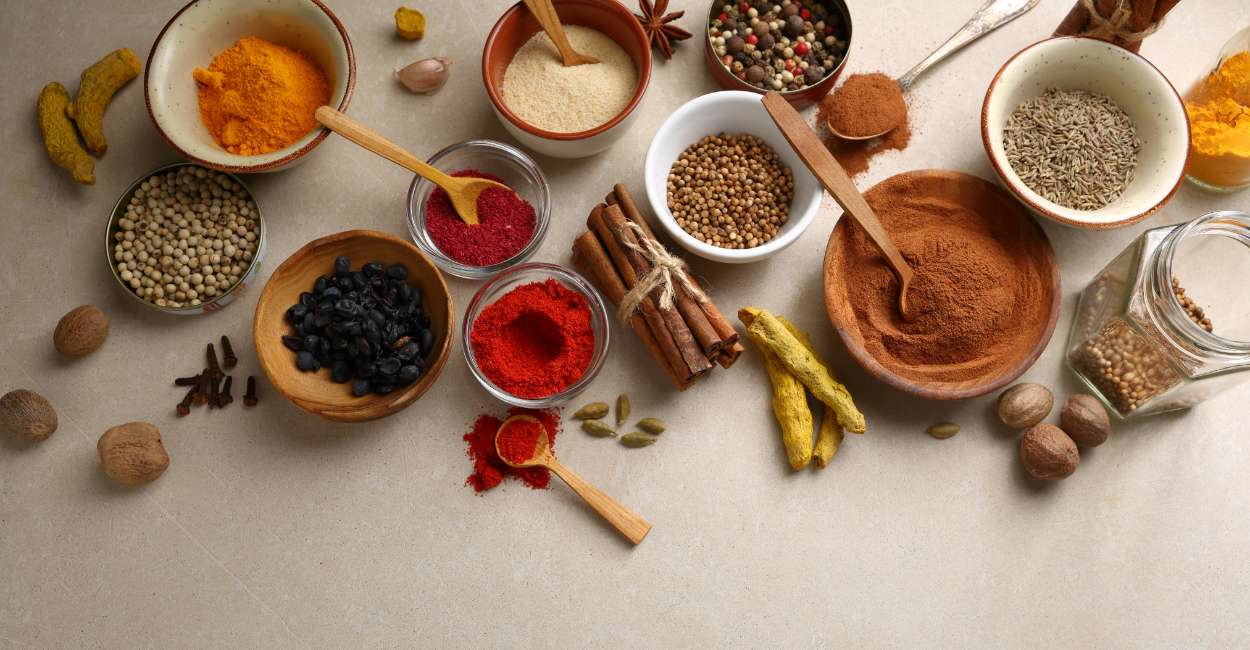
Flavor is the soul of any dish, and mastering the art of layering flavors can elevate your culinary creations to new heights. Herbs and spices play a pivotal role in this process, adding depth, complexity, and nuance to your meals.
In this article, we will delve into the world of herbs and spices, exploring their individual characteristics and how to expertly combine them to create a symphony of flavors.
Understanding Herbs and Spices:
Herbs and spices are derived from various parts of plants, including leaves, seeds, bark, and roots. Herbs, such as basil, thyme, and cilantro, are typically the leaves of plants and are known for their aromatic qualities.
Spices, on the other hand, come from other parts of the plant, such as seeds (cumin, coriander), bark (cinnamon), or roots (ginger, turmeric), and are known for adding warmth and depth to dishes.
Building Blocks of Flavor:
To effectively layer flavors with herbs and spices, it’s essential to understand the basic building blocks of taste:
Aromatics:
Herbs like basil, mint, and cilantro impart fresh, aromatic notes to dishes. Use them to finish a dish or add them towards the end of cooking to preserve their delicate flavors.
Spices:
Spices such as cumin, coriander, and paprika contribute warmth and complexity. Toasting spices before use can enhance their flavor, releasing essential oils and adding depth to your dishes.
Citrus:
Incorporating citrus zest or juice can brighten up a dish, providing a burst of freshness. Lemons, limes, and oranges are popular choices for adding acidity and a zesty kick.
Umami:
Ingredients like soy sauce, miso, or Parmesan cheese contribute umami, the savory and rich fifth taste. These elements can round out the overall flavor profile of a dish.
Layering Techniques:
Start with a Base:
Begin by establishing a solid foundation for your dish. This could be a flavorful broth, a well-seasoned sauce, or a perfectly marinated protein.
Build Aromatics:
Add fresh herbs towards the end of cooking to preserve their volatile oils. This step adds a burst of aroma and brightness to your dish.
Introduce Spices:
Incorporate spices at different stages of cooking. Toast them in oil or dry roast them before grinding to maximize their flavor potential.
Citrus and Acidity:
Incorporate citrus elements or acids at the end to provide a balancing contrast. This step lifts the overall flavor profile and enhances the complexity of the dish.
Umami Boosters:
Consider adding umami-rich ingredients to deepen the savory notes of your dish. Experiment with soy sauce, fish sauce, or aged cheeses to achieve a more rounded flavor.
Examples of Flavor Combinations:
Mediterranean Flavors:
Combine oregano, rosemary, thyme, and garlic for a classic Mediterranean profile. Pair with lemon zest for a bright twist.
Indian Spice Blend:
Create a flavorful blend with cumin, coriander, turmeric, and garam masala for a rich and aromatic Indian-inspired dish.
Mexican Fiesta:
Blend cumin, chili powder, paprika, and cilantro for a vibrant Mexican flavor. Lime juice can add a refreshing touch.
Conclusion:
Mastering the art of layering flavors with herbs and spices opens up a world of culinary possibilities. By understanding the characteristics of different herbs and spices and employing strategic layering techniques, you can transform simple ingredients into extraordinary dishes that tantalize the taste buds. Experiment, trust your palate, and enjoy the creative journey of crafting memorable and flavorful meals.
FAQs
Q: What’s the significance of layering flavors with herbs and spices in cooking?
A: Layering flavors with herbs and spices enhances the depth, complexity, and overall taste of dishes, turning ordinary meals into extraordinary culinary experiences.
Q: How do I effectively combine herbs and spices to create a balanced flavor profile?
A: Achieve balance by understanding the characteristics of each herb and spice. Experiment with different combinations, considering factors like freshness, warmth, and aroma to create harmonious flavor layers.
Q: Can you provide tips for preserving the delicate flavors of fresh herbs during cooking?
A: Add fresh herbs towards the end of the cooking process to preserve their volatile oils. This ensures a burst of aroma and brightness in your dishes.
Q: What’s the role of aromatics in layering flavors, and how should I incorporate them?
A: Aromatics, like basil, mint, and cilantro, add fresh notes to dishes. Incorporate them at the end of cooking to preserve their delicate flavors or use them as a finishing touch.
Q: Are there specific techniques for toasting spices to maximize their flavor potential?
A: Toast spices in oil or dry roast them before grinding to enhance their flavor. This process releases essential oils, adding depth and complexity to your dishes.
Q: How can I introduce citrus elements for a burst of freshness in my dishes?
A: Incorporate citrus zest or juice towards the end of cooking to brighten up your dish. Lemons, limes, and oranges are popular choices for adding acidity and a zesty kick.
Q: What are umami boosters, and how can I incorporate them into my cooking?
A: Umami boosters like soy sauce, miso, or Parmesan cheese contribute a savory richness. Experiment with these ingredients to deepen the overall flavor profile of your dishes.
Q: Can you suggest flavor combinations for specific cuisines, like Mediterranean or Indian?
A: Certainly! Explore flavor combinations like oregano, rosemary, thyme, and garlic for a classic Mediterranean profile or create an Indian-inspired blend with cumin, coriander, turmeric, and garam masala.
